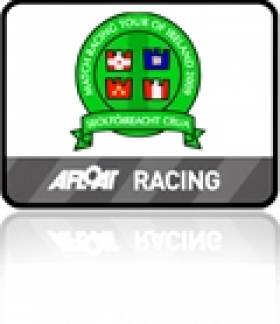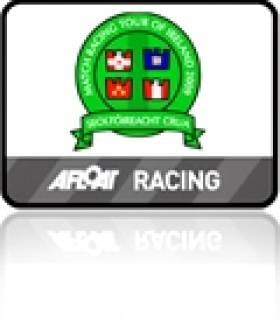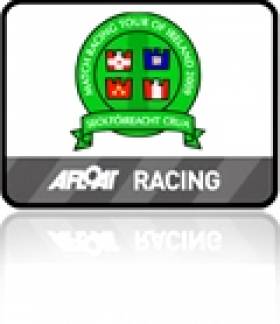Displaying items by tag: Nations Cup
World's Top Match Racers Compete in Nations Cup Final
Hosted by Sail Sheboygan, the competition will see some of the finest sailors from across the globe mixing it up along the Lake Michigan shore in identical one-design class sailboats for this culmination of a series of eight match racing regattas that started in Porto Alegre, Brazil, on 24 March.
The ISAF Nations Cup is a global competition to find the world's top match racing nation in open and women's events, while also promoting and developing the sport of match racing in sailing, which pits one boat against another. Gaining popularity, women's match racing will make its debut as an Olympic Sailing event for the 2012 Olympic Games in London. The 2011 Nations Cup included seven regional finals, from which the top teams will compete in Sheboygan. The Grand Final will be sailed in the Sonar class for the open event and the Elliott 6m for the women's event.
Ten teams will compete in the women's event, and ten entries have been confirmed in the open event. In the women's event, two-time defending champion and number one ISAF ranked women's match racing skipper and #4 in the world, Claire Leroy (FRA) and her crew will go up against the American team led by Genny Tulloch, ranked #11, and Olympic medallist Mandy Mulder of the Netherlands, ranked #17. Further competition is expected from the Brazilian team led by Nations Cup veteran Juliana Senfft.
The open event will see American Shawn Bennett and his crew of Dave Perry and Craig Healy take on the Danish team led by Mads Ebler, ranked #8 in the ISAF open match racing division rankings, and New Zealand match racing winner Laurie Jury and his team. Racing for Poland will be three-time Polish match racing champion Przemek Tarnacki. Teams representing Australia, Great Britain, South Africa, France, China, Pakistan, Greece, Turkey and Canada will also be sailing for the cup.
Antonio González De Le Madrid, ISAF Competitions Manager, said, "We are delighted that some of the world's best match racers will be making the trip to Sheboygan for the ISAF Nations Cup. There are some very experienced sailors lining up alongside those who are in the early stages of their development. Nonetheless it should make for a fantastic few days of match racing action."
According to Sail Sheboygan's, Executive Director, Rich Reichelsdorfer, said, "Sail Sheboygan is excited and honored to be hosting the Grand Final of the Nations Cup. We have assembled a top-class race management team backed up by a dedicated corps of volunteers for this premiere match-racing event and we can't wait to show the world our facility. With dozens of the best match-racing sailors in the world coming to Sheboygan, the ISAF Nations Cup will be a spectacle to be enjoyed both by sailors and spectators alike. The racing is sure to be fast and furious and the onshore activities will be equally fun."
A non-profit organization, Sail Sheboygan, was formed in 2004 to promote national and international sailing competition and education. As one of only four US Sailing Centers, its mission is to develop sailing and seamanship at all levels, regardless of age, income, ability or disability.
Rejig Means No South Coast Match Racing Fixtures
There will be no match racing on the south coast this year following a rejig of the fixtures calendar.
After two years of expansion for match racing in terms of events the theme for 2011 is consolidation.
Changes to the ISA SailFleet schedule for the boats mean that we have had to go through a rejigging of the match racing calendar.
The major impact is that Royal Cork YC are to take the boats latter than originally hoped meaning that they will be unable to host a leg of the Tour.
With Kinsale not taking part in the SailFleet scheme this year that means no match racing on the south coast for the first time in a couple of years.
With no tie up with the Dun Laoghaire Festival of Cultures available this year a date of July 23rd and 24th has been settled on for the Ireland vs The World International.
The highlight of last year this event will once again pit Irelands 6 best match racers against 6 teams from the rest of the world. Once again National and Tour champion John Sheehy will captain the Irish team.
The Leinster Match Racing Open, to be hosted by the Royal Irish Yacht Club, has been moved to July 16th and 17th to allow it to act as qualification for the Irish team for the following weekend and to give Laura Dillion and the Gladiators (Sam Hunt, Paddy Blackley, Peter Bayly, Richard Murphy) competitive practice immediately before heading over to Poland to represent the country at the ISAF Nations Cup.
Howth Yacht Club's, Dublin Match Racing Open stays with a date of September 3rd and 4th before we head for Lough Derg and the Womens (October 15th and 16th) and Open National Championships (November 5th And 6th).
All of the above means that here will be no Munster Match Racing Open this year and work continues to find a host for the IUSA Student Match Racing Nationals with Galway a potential for early April. There has been considerable work on the cost of entry for events over the winter and the majority of events will have a basic entry of €330 this year. All events will be run at ISAF grade 3.
Revised calendar
July 16-17th – Leinster Match Racing Open, Royal Irish Yacht Club
July 23-24th – Ireland vs The World International, Royal St George Yacht Club
September 3rd and 4th – Dublin Match Racing Open, Howth Yacht Club
October 15th and 16th - Womens Match Racing Championships, Lough Derg Yacht Club
November 5th and 6th – National Match Racing Championships, Lough Derg Yacht Club
Two Teams Set for Nations Cup
Sam Hunt has extensive match race experience having achieved third place in the ISA Match Race Championship and scoring highly on the Irish Match Race Tour in 2011. He is currently placed 308 in the ISAF World Match Race Open Rankings. Laura Dillon is the current Irish Women's champion having won the ISA Women's Match Race Championship in 2011. She is currently placed 116 in the ISAF World Match Race Women's Rankings and is a previous winner of the ISA All Ireland Sailing Championship.
Match Racing has grown strongly in Ireland since the ISA launched their SailFleet of J/80 keelboats in 2007 and the formation of the Match Race Ireland association in 2010. Among the events that SailFleet has facilitated are the ISA All Ireland and Match Race Championships, the ISAF Nations Cup 2007 Regional Final in Kinsale and the Bangor Match Cup a Women's Grade 1 event on Belfast Lough next August.
"The ISAF Nations Cup is a very tough competition and the best match racers in the world competing. Having hosted the Grand Final in Cork and a Regional Final more recently in Kinsale our sailors know that the standard will be high. Both Sam and Laura are very experienced match racers and know what they need to do to come out on top in these competitions." said Ed Alcock of the ISA.
The ISAF Nations Cup is a global competition to find the world's top match racing nations in both open and women's events and to develop match racing infrastructure around the world. The ISAF Nations Cup website is here: http://www.sailing.org/nations-cup.php































































